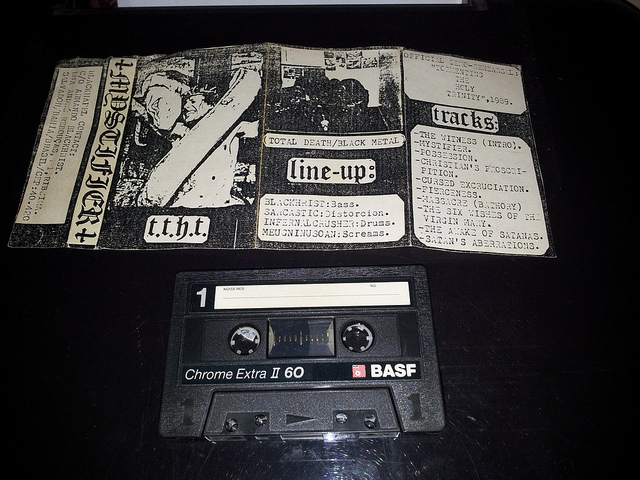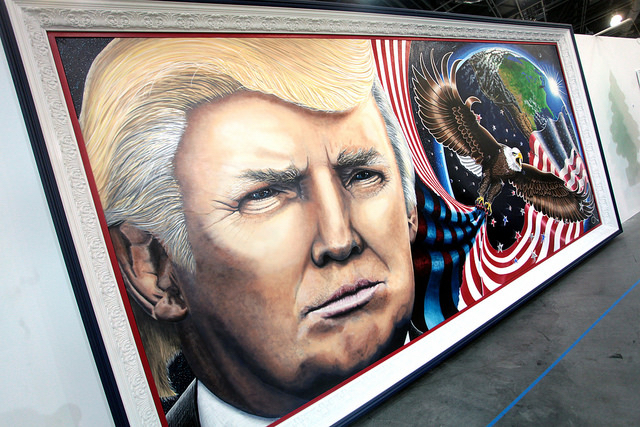One way of tackling the metal crisis is to reintroduce scarcity. To some extent this is already happening. The stubborn persistence of vinyl and cassettes in metal derives from a desire to maintain scarcity. The reduction al absurdo of this tendency is releasing music in near-obsolete formats such as floppy diskettes. However, on its own, this strategy is too limited though, as not only are many such releases simultaneously released digitally. They also remain part of the logic that maintains the need and desire to release more and more metal in perpetuity.
The kind of scarcity is one that relies on a certain kind of disciplining of listening to and making music. This is an ‘artificial’ form of scarcity, as it does not and cannot pretend that we can return to a time when metal releases were genuinely hard to find. Instead, it puts the onus on the listener and/or musician to submit themselves to a discipline that produces its own scarcity.
A key figure in thinking along these lines is the musician, writer and artist Bill Drummond. Most famous for the huge hits he achieved in the UK as part of the trance act the KLF in the early 1990s, much of Drummond’s subsequent work has involved attempts to respond to his belief that ‘recorded music has run its course.’ In a 2008 interview, he explained:
“Music as a whole cannot run its course and art cannot run its course either. As a medium recorded music has run its course in the same way that certain forms of art that were very popular in the 20th Century have run their course. You will always get people coming along saying that ‘No, no, painting still has more life left in it.’ But really they mean that there is still money left in it because people still want paintings to hang on their walls. So some people will still do some interesting things with paintings but that is not really where the ideas are. That is not where the emotions are happening. So painting has run its course but art hasn’t. Really the possibilities are endless when you have a canvass but after a while you just start seeing a painting. With a recording the possibilities are endless but after a while you start hearing just another album. And there is so much more to art than painting by numbers.”
Drummond has developed a number of responses to his sense of the end of recorded music as a medium. As a listener, he has tried various strategies including restricting his listening to recorded music to artists whose name starts with a particular letter – starting with ‘A’. In 2005, he unilaterally instituted ‘No Music Day’ for 21 November every year, announcing it with the following poster:
ON NO MUSIC DAY:
NO HYMNS WILL BE SUNG.
NO RECORDS WILL BE PLAYED ON THE RADIO.
iPODS WILL BE LEFT AT HOME.
ROCK BANDS WILL NOT ROCK.
CONDUCTORS WILL NOT TAKE THE PODIUM.
DECKS WILL NOT SPIN.
THE NEEDLE WILL NOT DROP.
THE PIANO LID WILL NOT BE LIFTED.
FILMS WILL HAVE NO SOUNDTRACK.
JINGLES WILL NOT JANGLE.
MILKMEN WILL NOT WHISTLE.
CHOIRBOYS WILL SHUT THEIR MOUTHS.
RECORDING STUDIOS WILL NOT ROLL.
MCs WILL NOT PASS THE MIC.
BRASS BAND PRACTICE WILL BE POSTPONED.
THE STRINGS WILL NOT SERENADE.
PLECTRUMS WILL NOT PLUCK.
RECORD SHOPS WILL BE CLOSED ALL DAY.
AND YOU WILL NOT TAKE PART IN ANY SORT OF MUSIC MAKING OR LISTENING
WHATSOEVER.
NO MUSIC DAY EXISTS FOR VARIOUS REASONS, YOU MAY HAVE ONE.
The aim here is to reinsert value in music by curtailing its ubiquity for at least one day. In 2005, Drummond developed ‘The 17’, a choir that has formed the core of much of his subsequent work:
The17 IS A CHOIR.
THEIR MUSIC HAS NO HISTORY, FOLLOWS NO TRADITIONS,
RECOGNISES NO CONTEMPORARIES.
The17 HAS MANY VOICES.
The17 EXISTS WHERE ANY GROUP OF 17 PEOPLE GATHER TO MAKE
MUSIC USING THEIR MOUTHS, THROATS, LUNGS, EARS AND MIND.
THEY USE NO LIBRETTO, LYRICS OR WORDS;
NEED NO KNOWLEDGE OF TIME SIGNATURES, RHYTHM OR BEATS;
NOR KNOWLEDGE OF MELODY, COUNTERPOINT OR HARMONY.
THEIR MUSIC WILL:
NEVER BE RECORDED FOR POSTERITY,
NEVER BE BROADCAST ON RADIO, TV OR INTERNET,
NEVER BE COMMODIFIED FOR THE MARKET PLACE,
NEVER BE PERFORMED FOR AN AUDIENCE.
IT EXISTS ONLY FOR THE EXPERIENCE OF THOSE PERFORMING IT.
The17 STRUGGLE WITH THE DARK
AND RESPOND TO THE LIGHT.
YOU CAN BE A MEMBER OF The17.
With The17, Drummond has tried to discover new value in music by deliberately freeing it of any of the apparatus with which it is currently associated. For Drummond, music becomes precious again when it becomes transient, unrecoverable and unknowable from outside the moment it was produced.
There are other ways in which this kind of artificial scarcity can reinject value into music. Some artists have experimented with producing works that exist only in one location or one copy. The performance of John Cage’s organ work As Slow As Possible began playing in a church in France 2001 and is scheduled to finish in the year 2640. Jean Michelle Jarre’s 1983 Music For Supermarkets LP was created to accompany an art exhibition, after which the master tapes were destroyed and a single remaining LP was auctioned off.
Such projects may seem gimmicky, but disciplines of scarcity can be adopted by anyone. In 2008, one blogger suggested a ‘Slow Listening Movement’ in which we deliberately slow down and concentrate harder on few pieces of music. He explained his method as follows:
“…from January to November 2009, I’m embarking on a kind of purification rite. In that time, I’m only allowing myself to download one MP3 at a time; the next MP3 can only be downloaded once I listen to the first one. With CDs, if I buy one, I have to listen to it all before I buy another, and before I am allowed to rip any of it to iTunes.”
Such challenges that inject artificial scarcity into metal may help make metal precious again.
Here is one challenge I have set myself and that some might like to take up: I am fascinated with mediocrity in metal, about the ways in which some recordings are classed as special, canonical and others are passed over. One of the first black metal albums I ever reviewed was the 1997 album Lost in Shadows Grey by the Norwegian black metal band Morgul. Morgul and this particular album are known by few, celebrated by few. They lack either widespread fame and underground ‘kvlt’ cache. They are not a ‘bad’ band at all, but they are certainly not canonical. I have committed myself to listen to this album in full once a month for the indefinite future. I don’t know what I will find, but this journey into mediocrity is likely to be an interesting one.
Another possible source of scarcity might be found through a revalorisation of live performance. One of the reasons why extreme metal developed its underground infrastructure was that the low numbers and low density of fans across the world made touring economically unviable. Even today, it is a mark of kvlt status to eschew live performance. However, this approach is now anachronistic to the extent that it is now live performance that represents scarcity and recorded music that represents abundance. The uniqueness and site-specific nature of live performance offers a rich vein of scarcity that is there to be explored. Paradoxically, it may be that when music is at its most ephemeral and fleeting that it can capture our attention most enduringly.
Part five in a series. Photograph courtesy of Ataliba Teixeira. Published under a Creative Commons license.





